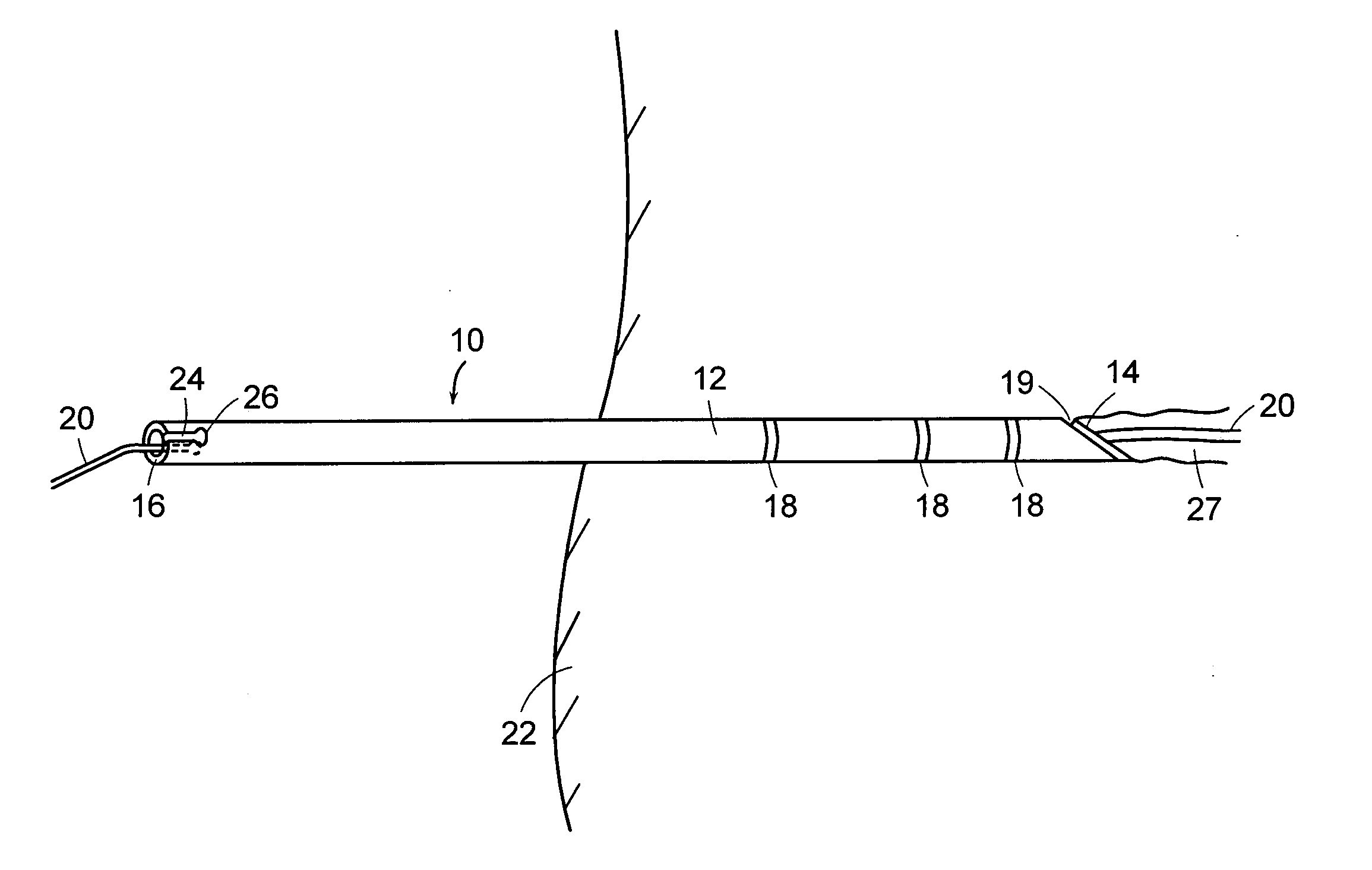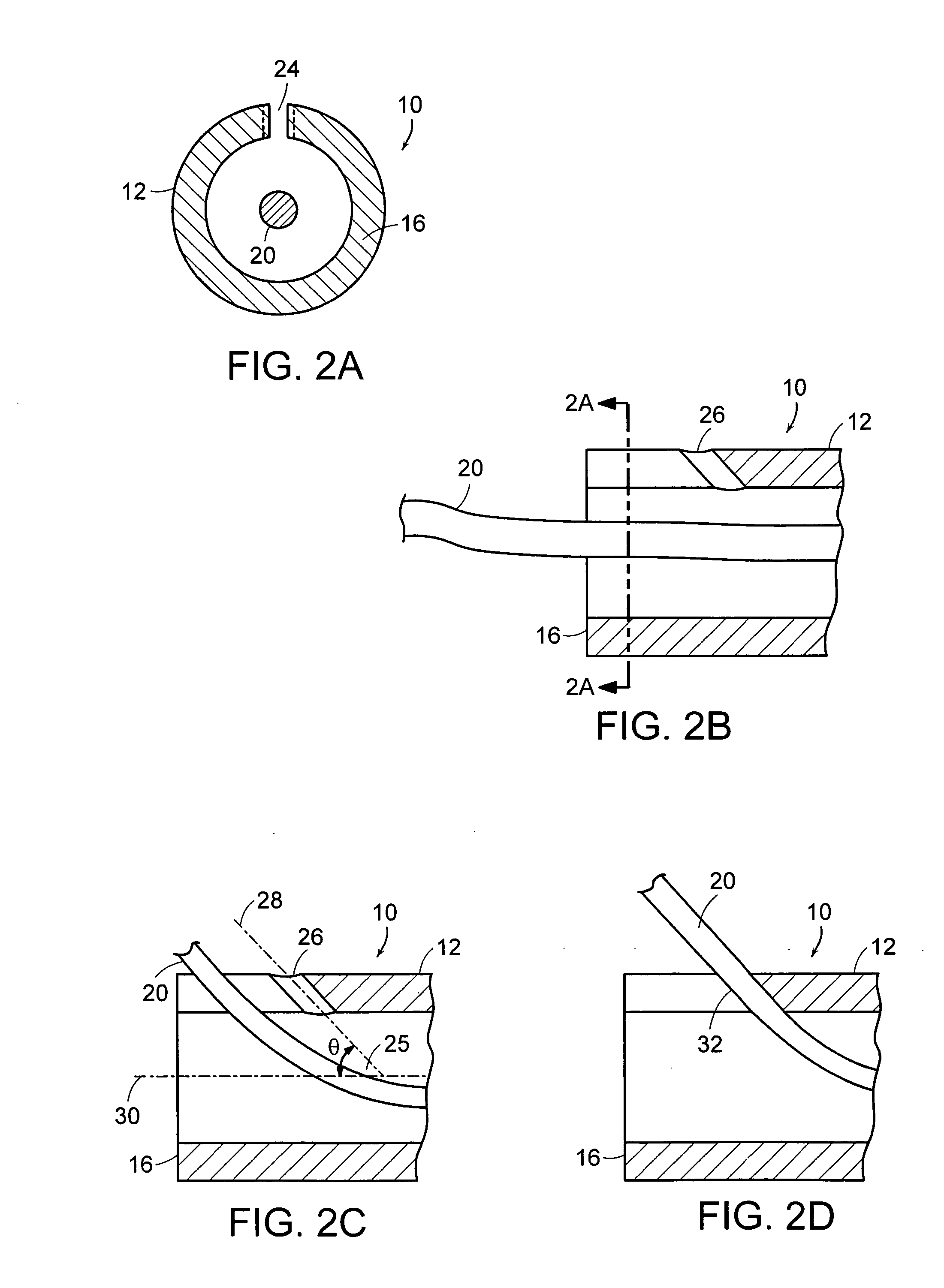Apparatus and method for establishing access to the body
- Summary
- Abstract
- Description
- Claims
- Application Information
AI Technical Summary
Benefits of technology
Problems solved by technology
Method used
Image
Examples
Embodiment Construction
[0023] Referring to FIG. 1, a transparent sheath 10 providing percutaneous access to the body 22 is partially advanced through a body tract 27 established by an interventional instrument over a guidewire 20. The sheath 10 can alternatively be used through natural body lumens for some procedures wherein percutaneous access is not required. The sheath 10 includes an elongated hollow member 12 and distal and proximal end faces 14 and 16, respectively. Radiopaque markings 18 and 19 are disposed along the elongated member 12 at known locations along the length of the elongated hollow member 12 and at the distal and 14 respectively. These multiple markings may be used as scaling features and observed during fluoroscopic imaging. Radiopaque markings 18 can also take other configurations or conformations such as lines, spirals, circles, bars, rings or alphanumeric characters to improve the visibility of the sheath 10 or identify the sheath 10. The markings may occupy the whole circumference...
PUM
 Login to View More
Login to View More Abstract
Description
Claims
Application Information
 Login to View More
Login to View More - R&D
- Intellectual Property
- Life Sciences
- Materials
- Tech Scout
- Unparalleled Data Quality
- Higher Quality Content
- 60% Fewer Hallucinations
Browse by: Latest US Patents, China's latest patents, Technical Efficacy Thesaurus, Application Domain, Technology Topic, Popular Technical Reports.
© 2025 PatSnap. All rights reserved.Legal|Privacy policy|Modern Slavery Act Transparency Statement|Sitemap|About US| Contact US: help@patsnap.com



